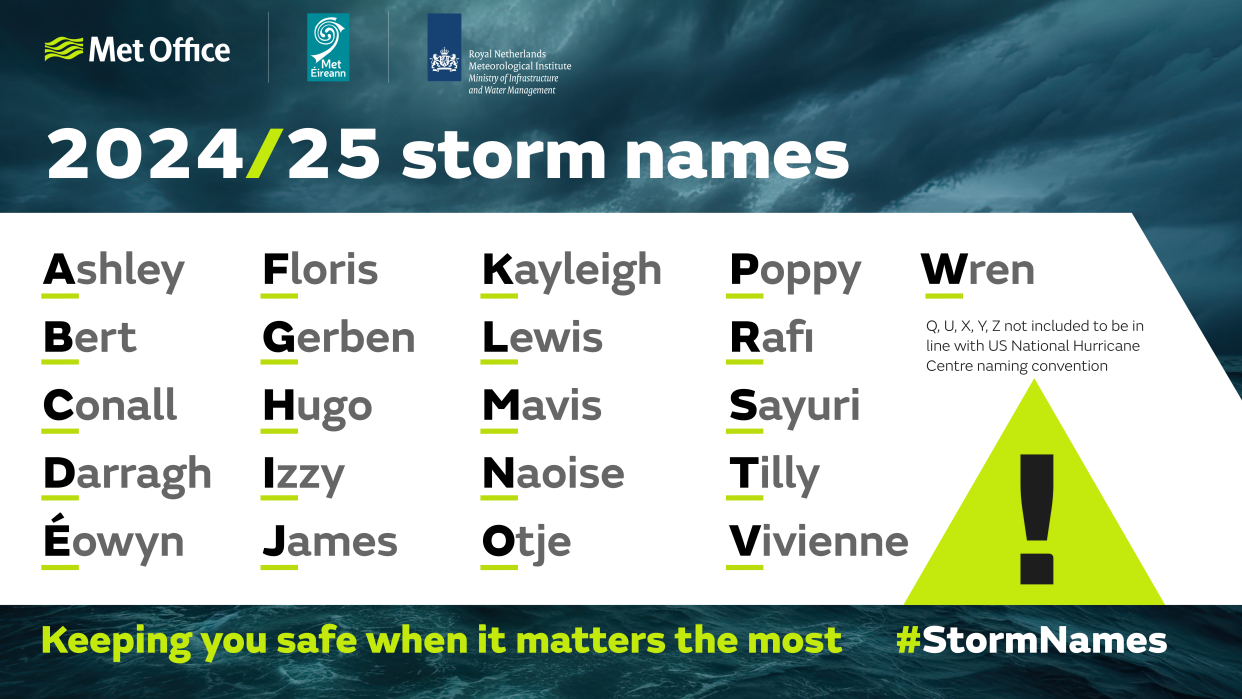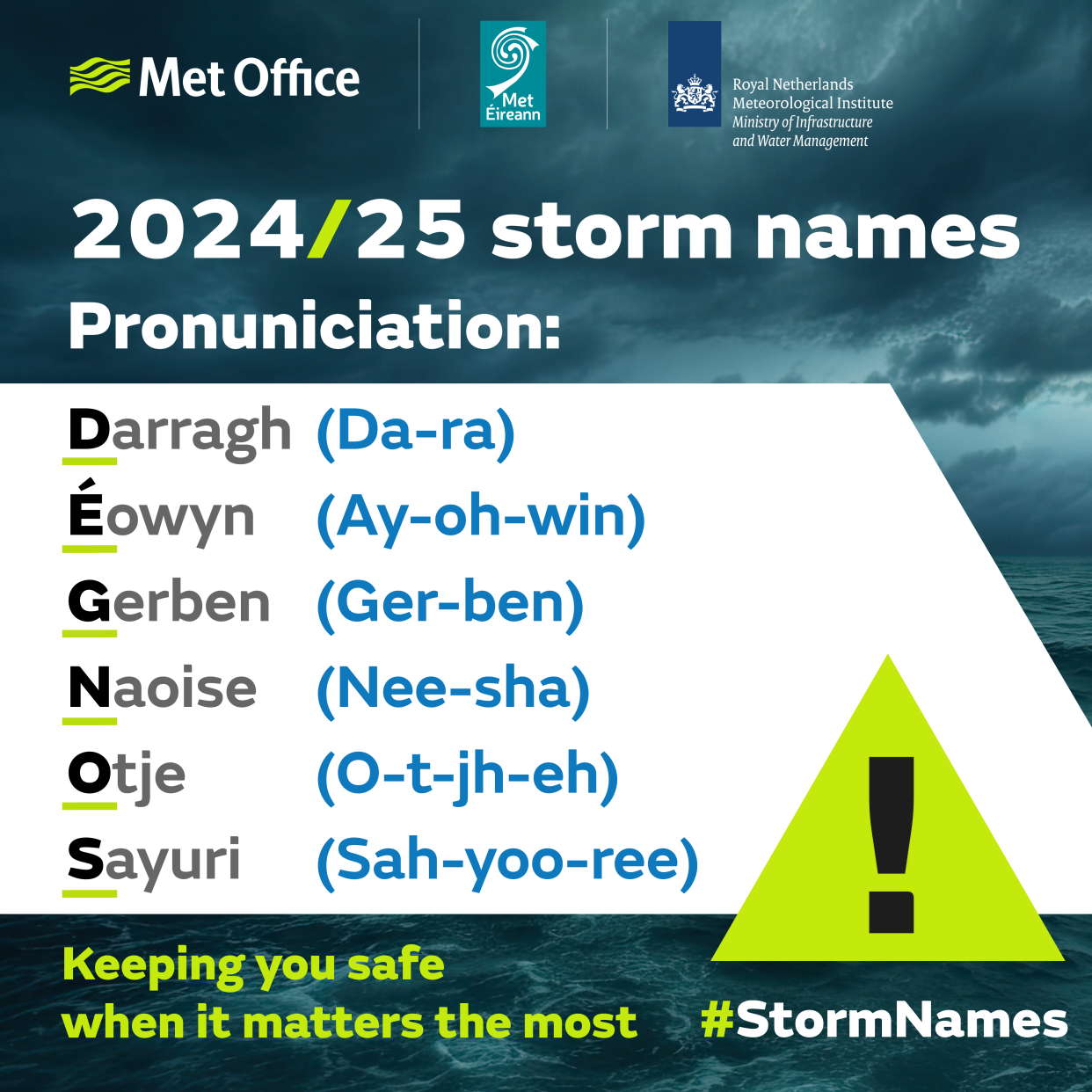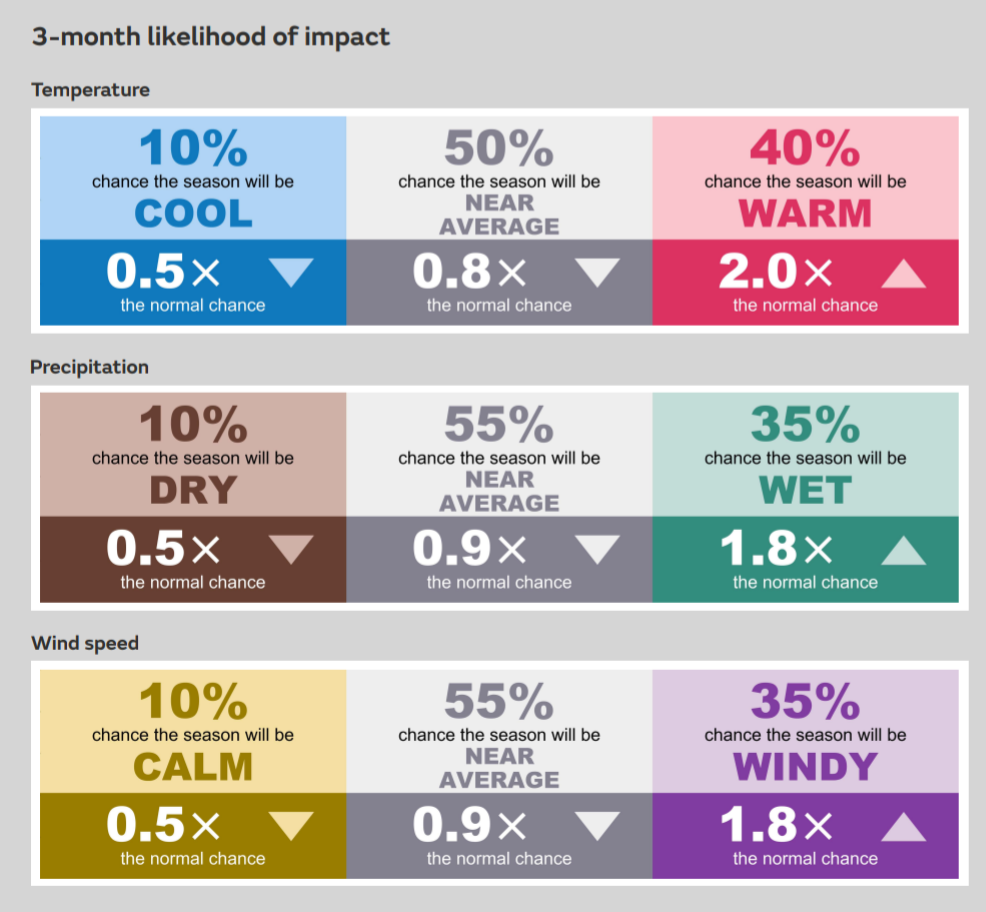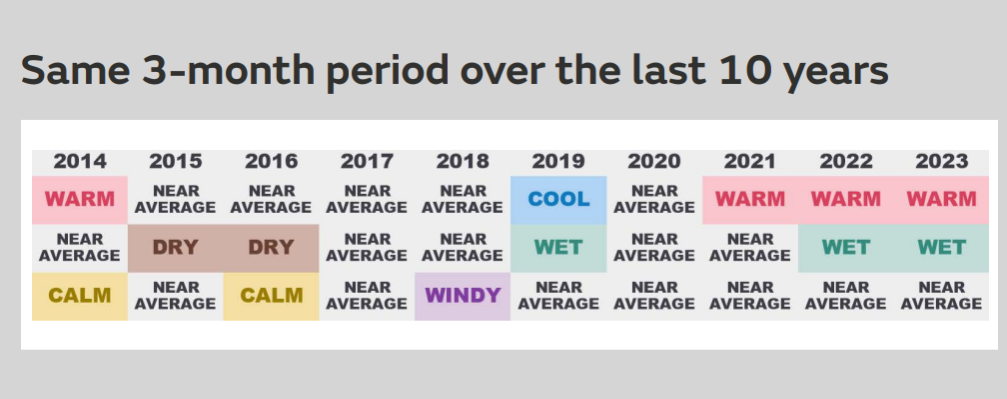Met Office releases storm names for this year and how to pronounce them

The Met Office has released its list of storm names for the 2024/25 season that will be used to identify severe weather events that could impact the UK between early September and late August next year.
The meteorological organisation has been naming storms since 2015 and uses them to describe weather that have the potential to cause disruption or damage which could result in an amber or red warning.
It was introduced to provide a single authoritative system that helps officials to communicate severe weather events to keep the public, their property and businesses safe.
There are no names for the letters Q, U, X, Y and Z in order to maintain consistency for official storm naming in the North Atlantic.
What are the storm names?
The full list for 2024/25 is: Ashley, Bert, Conall, Darragh, Eowyn, Floris, Gerben, Hugo, Izzy, James, Kayleigh, Lewis, Mavis, Naoise, Otje, Poppy, Rafi, Sayuri, Tilly, Vivienne and Wren.


What is the weather going to be like this autumn?
On Tuesday, the Met Office released its three-month outlook, which indicated autumn is likely to be wetter, warmer and windier than usual.
The chance of a wet September is similar to normal, and the likelihood of it being windy is also within the normal range.

The three-month outlook offers an early indication of potential temperature, rainfall and wind patterns across the UK. This information is valuable for long-term planning and identifying areas where weather-related issues might arise.
To assess the likelihood of different weather scenarios, the outlook uses three categories based on historical UK observations: cold, near average or mild for temperature; wet, near average or dry for rainfall; and calm, near average or windy for wind speed.

How many storms did we have this year?
The 2023/24 storm season was a record-breaker.
Spanning 1 September 2023 to 31 August 2024, the season saw an unprecedented 12 named storms, the highest number since the storm-naming system was introduced in 2015.
This period of intense weather began with Storm Agnes in September 2023 and concluded with Storm Lilian in August 2024.
Met Office Scientist Emily Carlisle said: “The UK’s storm season is highly variable, and minor changes in meteorological conditions are able to influence the severity of impacts we experience in the UK.
“This variability can even be noted in the last two years, with 12 named storms in the most recent year, but just two storms named by the group in the 2022/23 season.”


